Commercial Tahitian Pearl Grading Guide: Quick Grading System!

Top-grade Tahitian pearls offer excellent luster and smooth surfaces, whereas low-grade ones include visible spots and inclusions on the pearl.
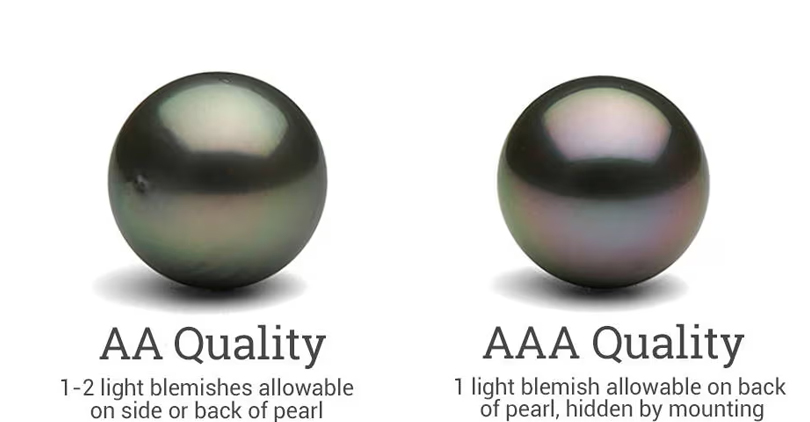
While deciding the pearl's quality, rarity, and value, a grading system shows the vast expense according to complex factors. Hence, a quick breakdown helps with selection once you look for unique, distinctive, and luminous pearls for your desired jewelry.
If you’re confused with Tahitian pearl grading, scroll through our grading system to differentiate various pearls.
Variation of Tahitian Pearl Grading
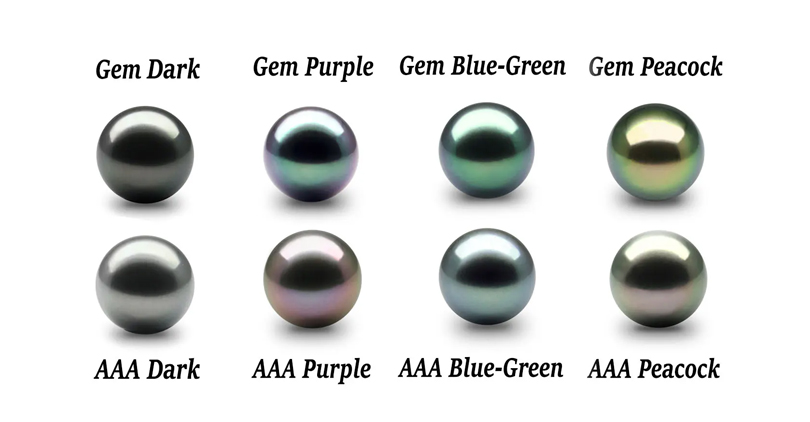
Tahitian pearls offer five different gradings depending on surface cleaning, luster, shape, and nacre thickness. Let's dig into these grading in detail.
AAAA Quality
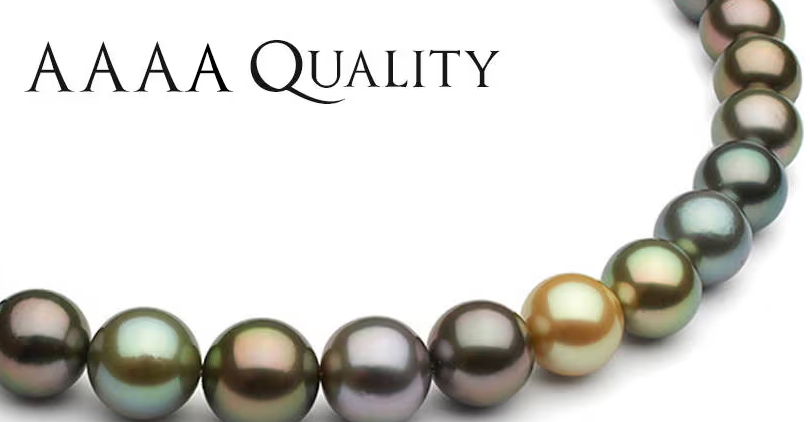
With 95-99% clean surface quality, AAAA pearl grade appears clean during close inspection. Even a sharp luster and detailed reflection show less than 5% inclusions in the total surface of the strand.
Based on Pure Pearls, AAAA pearl grade covers intense yet vivid overtones with crisp edges. Also, the thick nacre (min 0.8mm or up) of high pearl grade exhibits toughness and determines exceptional luster in pearl necklaces, earrings, and pendants.
AAA Quality
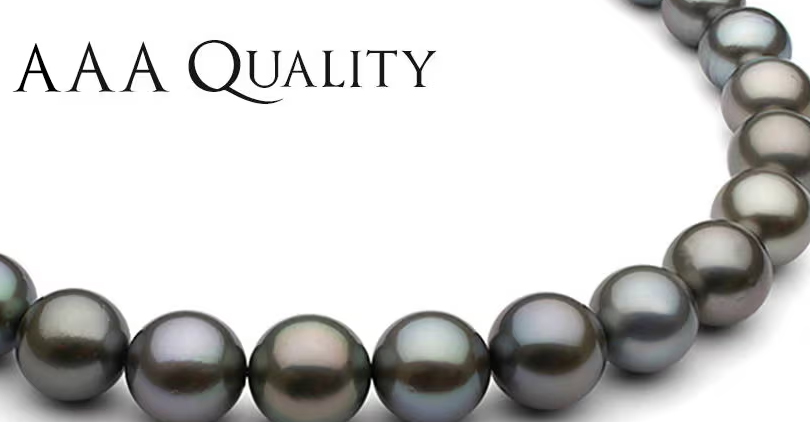
While going through a casual inspection, the AAA grade shows a 90% clean surface with very high to detailed reflections. In short, intense inspection shows round or symmetrical shapes, whereas light deviation hikes on perfect ones.
However, 1-2 deep inclusions and softly blurred edges are allowable on a total AAA-grade Tahitian pearl strand. So, these pearls offer a slight shape, color, or size variation.
AA+ Quality
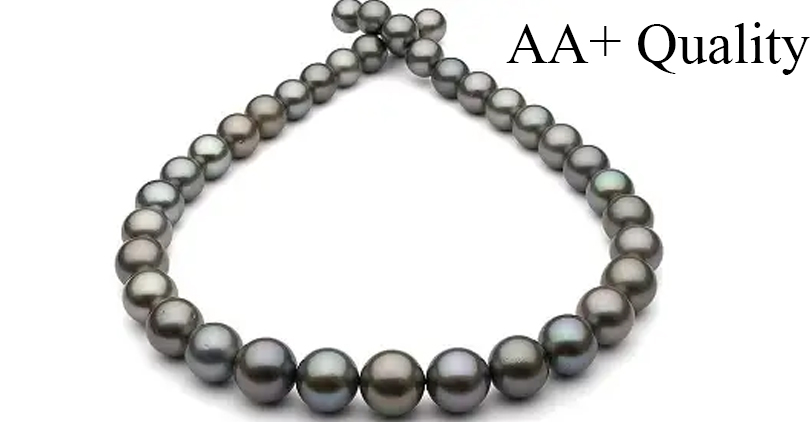
Once the regular inspection shows less than 15% shallow inclusions, the AA+ grade appears with 75-80% surface cleanness. Only saturated color pearls with moderately detailed reflection pass the grade if the nacre is a minimum of 0.8mm thick.
On top of that, the AA+ grade pearls come with bright overtones and good matching on mostly sharp luster. But the surface may show deep inclusions as the grade allows 2-4 deep inclusions.
AA Quality
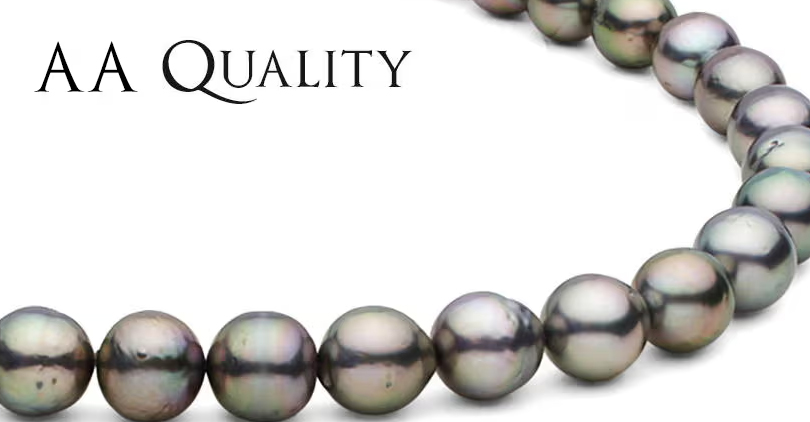
AA quality pearl offers good luster and detailed reflections while the surface is 65-75% clean with a fair reflection rate. Less than 35% of inclusions and 10% of heavy blemishing are allowable on a complete strand.
In addition, the AA pearl grade includes blurred, diffused edges with saturated overtones. Also, these pearls won’t show detailed facial features or proper color matching.
A Quality
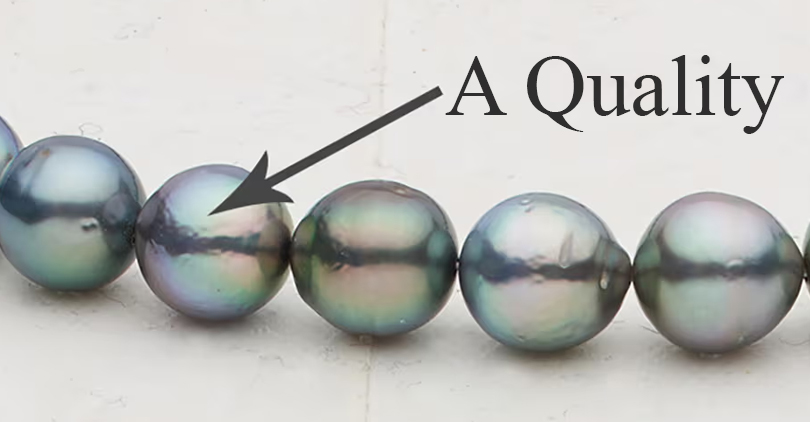
Only 50-60% clean surface pearls with 0.8mm minimum nacre thickness stay in the A Quality grade pearls. Besides, the low to medium reflection rate allows moderate to deep inclusion of up to 45% in a single strand.
Further, the regular blemishes on the front, back, or side take the pearls to the lowest grade and show variation.
Factors Decide The Tahitian Pearl Grading
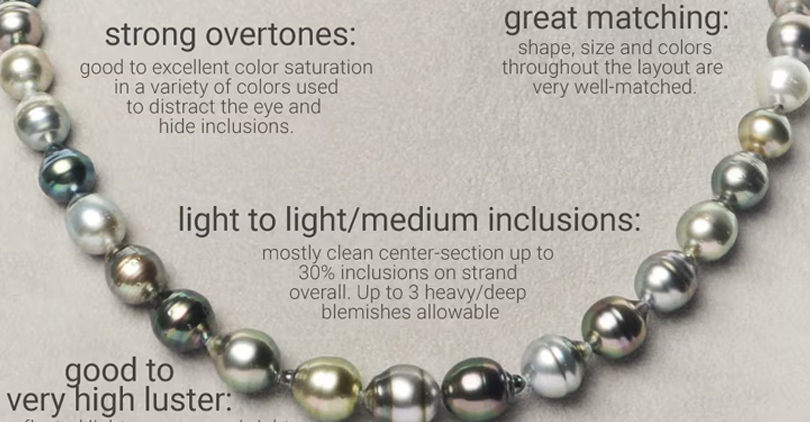
Factors including surface quality, luster, color rarity, and nacre thickness decide the overall value. Let's have a look at these factors in detail.
Surface Quality
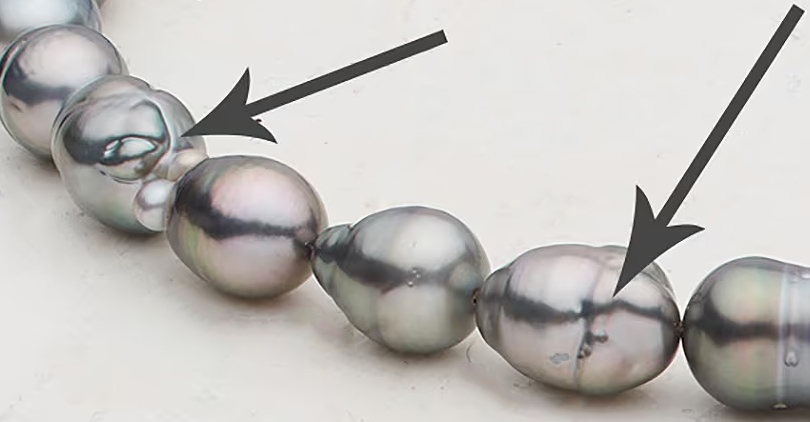
There are a few gradings for pearl surface quality: A, B, C, and D. Due to the visible blemishes, it is easy to determine the grading with the naked eye.
Now, A-grade pearls are clean and lightly blemished, whereas B-grade include light blemishes. Likewise, C-grade pearls are moderately deficient, while D-grade ones allow heavy blemishes.
Pearl Luster
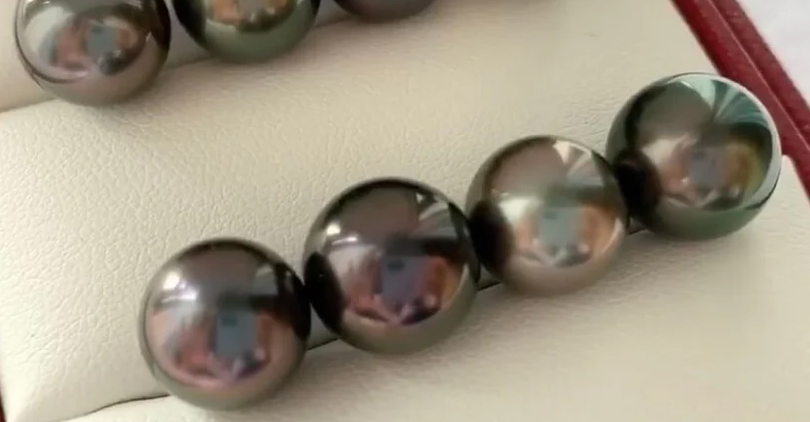
According to the Black Moon, luster expresses the beauty of the pearl and indicates grading. In short, pearl luster has four grades to determine the quality, from gloss to very high gloss.
Moreover, pearl with a very high gloss luster is AAAA grade, high gloss is AAA, medium gloss is AA, and soft gloss is A grade.
Color Rarity
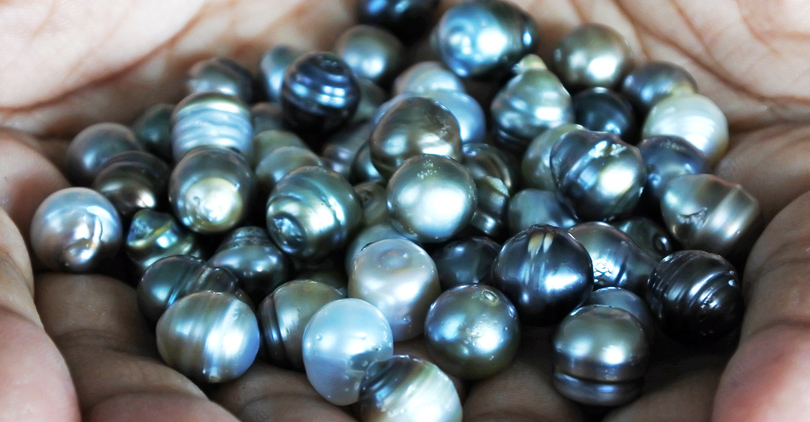
While the color rarity decides the value, the green overtone of dark Tahitian pearls is the most desired and valuable color. Even the multicolor Tahitian pearl is trendy and used in high-quality pearl jewelry.
On top of that, muddy-colored pearls without rare overtones offer less value than green-overtone pearls. So, the beautiful overtones in a variety of color combinations show the rarity and decide the value of Tahitian pearls.
Nacre Thickness
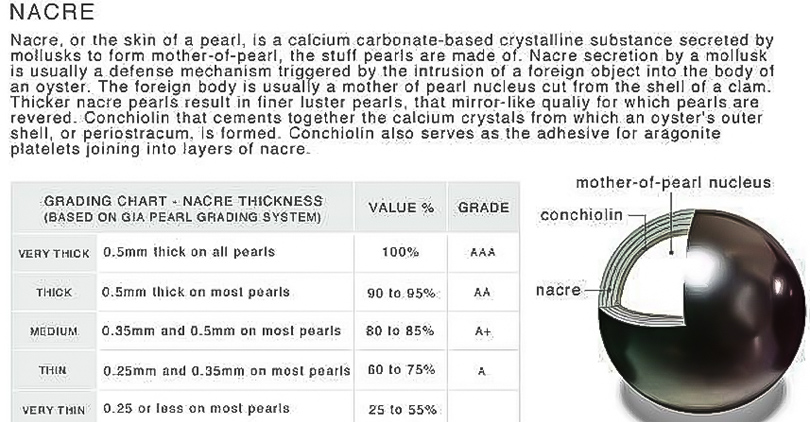
Nacre thickness determines the pearl's beauty, as it helps to increase the reflections and affects the pearl's durability. Hence, pearls come with very thick nacre layers that surpass AAAA-grade Tahitian pearl quality.
Further, pearls include thin nacre layers that won’t show luminous luster and durability, placed on enough A-grade quality.
Should I Pick AAA or AAAA Grade Tahitian Pearls?
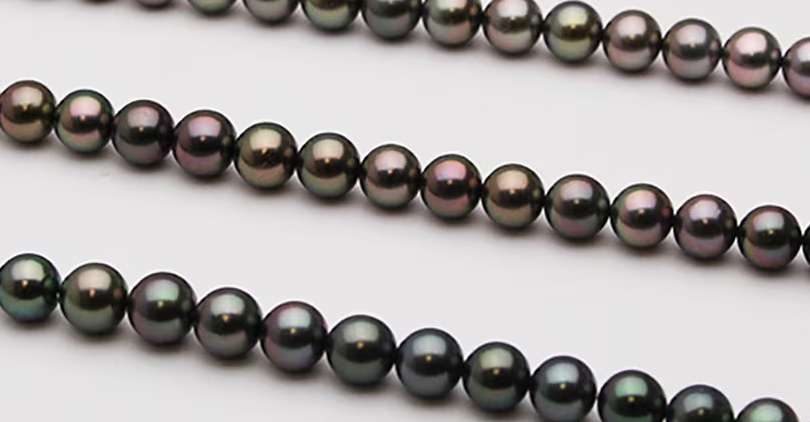
Due to higher surface cleaning, luster, and nacre thickness, AAAA-grade Tahitian pearl is a better option for pearl jewelry.
Now, AAAA grade Tahitian pearl appears up to 99% clean with a sharp luster, whereas AAA grade shows a 90% clean surface with very high reflections.
On the other hand, the AAAA grade shows vivid overtones with crisp edges, while the AAA grade includes 1-2 deep inclusions and softly blurred edges. Hence, AAAA-grade Tahitian pearls are perfect for pearl jewelry lovers.
Warp Up
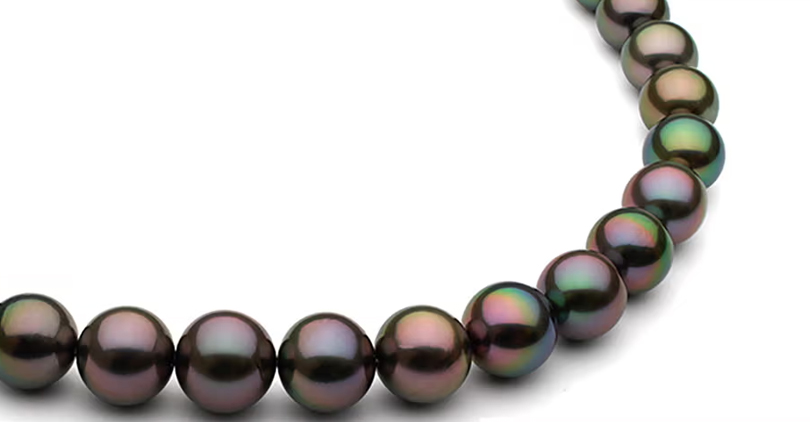
On the flow, AAAA Tahitian pearl grade shows exceptional luster with less than 5% inclusions, while A-grade includes blemishes on the surface and offers low reflection.
Moreover, pearls with high grades give sharp and bright reflections, while medium or low grades provide fuzzy reflections. So, use the Tahitian grading system to pick luminous pearls for your desired pearl jewelry!


Leave a Comment